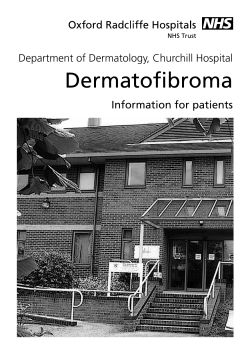
and Organization Restructuring Change Management May 23, 2003
Organization Restructuring and Change Management May 23, 2003 Amway Korea Ltd. Table of Contents For a Better Life Helping People Live Better Lives I. About Amway Corporation II. Organization Restructuring & Change Management For a Better Life Helping People Live Better Lives I About Amway Corp. “TO HELP PEOPLE LIVE BETTER LIVES” Amway Corporation Amway corporation is based in ADA, Michigan, USA In 1959, Jay Van Andel and Rich DeVos founded the direct-selling company Amway Amway is the biggest direct selling company in the world Amway possesses 380 patent rights as of Mar. 2001, and submitted 430 applications for the patent right Amway's largest sales come from Korea, Japan, China, India and Taiwan. Amway Korea Ltd. Amway Korea was established in 1988, and started its operations in 1991 There are 2 RDC (Regional Distribution Center) and 12 IBO (Independent Business Owner) Plazas Amway Korea is No. 3 market within Amway Corporation, and it reached over 1.2 trillion won sales in FY02 There are 300,000 active IBOs in Amway Korea About 400 employees are working in Amway Korea Ltd. Daegu IBO Plaza Eumsung RDC Amway Korea Business Process Home Delivery ADA Kayang IP Daejon IP Taegu IP Kwangju IP Pusan IP One-For-One Cheju IP Ulsan Kangnung IBOs’ Direct Taking of Amway Products (RDC) IBO’s taking in products at home Sungnae IP Visit us at http://www.amwaykorea.co.kr For a Better Life Helping People Live Better Lives II. Organization Restructuring & Change Management 1. Background 2. Scope and Process : Organization Diagnosis 3. Output : Organization Diagnosis 4. Current Task 5. Future Tasks and Direction 1. Background Organizational Situation Decreased Org. Efficiency due to rapid growth (particularly in terms of org. size) Need for Change Lowered Managerial Capacity of Mid. Mgmt. due to considerable increase in headcount Lack of Customercentered Mindset of Employees due to increased bureaucracy within the org. 1. Background (Cont’d) Employees’ Initial Attitude of the Project Junior and Senior All Employees Sensitiveness Defensiveness Expectation Leader All Employees 1. Background (Cont’d) To resolve the problems concerned, 1) in-depth organization diagnosis was conducted 2) change management tools were utilized to improve employees’ readiness for change 2. Scope and Process : Org. Diagnosis Organization Diagnosis Scope and Process Phase I Phase II Determination of Issues Focus Group Interview (Junior) Focus Group Interview (Senior) Focus Group Interview (Leader) Exec. Interview Phase III Diagnosis & Task Development EOS Result Review Main Issues Determined External/ Internal Environment Review Action Planning to Strengthen Org. Capability Top Mgt. Workshop to determine tasks Tasks Identified Action Plan Solution Development Task Development 2. Scope and Process : Org. Diagnosis (Cont’d) Change Management Tools Develop Business Case to attract employees’ attention Identify and analyze Key Stakeholder Assess Communication Channel Communication Plan 3. Output : Org. Diagnosis • Each task has been ranked based on their strategic importance, easy implementation, urgency and short-term effectiveness. Tasks Redefining and Sharing of Vision & Strategy Strategic Importance Easy Implementation Short-Term Effectiveness Urgency Priority Remarks 3 1 3 1 8 5 1 5 5 16 Manpower Structure Re-design 3 1 1 5 10 Job Analysis 3 3 3 1 10 Succession Planning 5 3 5 5 18 Korean Title Promotion Policy Re-design 1 3 3 3 10 Performance Mgmt System Re-design 5 3 3 3 14 Communication Effectiveness Planning 3 1 3 1 8 5 3 5 1 14 Org. Structure Re-design Leadership Development One of the 3 main objectives of 2003 3. Output : Org. Diagnosis (Cont’d) <Priority Tasks> Org. Structure Re-design Succession Planning Leadership Development Performance Mgmt System Re-design Infrastructure for Change Mgmt <Supporting Tasks> Manpower Structure Re-design Redefining and Sharing of Vision & Strategy Effective Communication Planning Job Analysis Implement TeamBased Org. Structure Korean Title Promotion Policy Re-design 3. Output : Org. Diagnosis (Cont’d) Changes in Employees’ Attitude after the Project Positive attitude of project intention among team leaders increased Employees’ trust of the top management increased Employees’ expectation of the project increased But, “let’s wait and see” attitude still exists especially among the juniors There are still some managers who are not prepared to ‘buy’ the project objectives, hence not willing to participate in current initiatives for change 4. Current Task Key Findings Amway Korea Management Service Finance Treasury Sales & MKT Logistics Biz. Relations Distribution PR & Gov’t Affair Marketing Logistics Planning Legal Affairs HRM Special Event GA/HRD ISD Import & Export Purchasing Local Sourcing PR & Gov’t Affair Tech. Reg/QA RM & GDS CSD RDC BCR & BSM HRM and HRD are separated; HRD is tied with GA (Usually HRM and HRD form one HR department; alternatively, each of the three functions operate independently) Despite the increase in number of IBOs, sales function has remained unchanged. Local Sourcing serves as an independent unit, with an executive as the department head. Implications & Solutions Review HRD’s roles and relocate as necessary. Review the capacity of sales function in line with the increase in both revenue and number of IBOs. Review Local Sourcing’s position in the org., and investigate potential linkage with other function(s). Due to the rapid growth of the org. there exists possibility of moral hazard, which may lead to need for internal audit function. Review span of control : Sales & MKT, Management Service 5. Future Tasks and Direction Change Management Succession Planning based on the New Org. Structure Performance Management - Identify future leadership competency Establish Training & Development Plan based on succession planning - Leadership Development - Performance Management & Coaching Skills Training - Executive Development Program - Customized in-house MBA program Others - Introduce “Cafeteria Benefit Program” - Talent Management and Retention - Develop “Total Compensation Strategy” Thank You
© Copyright 2025















